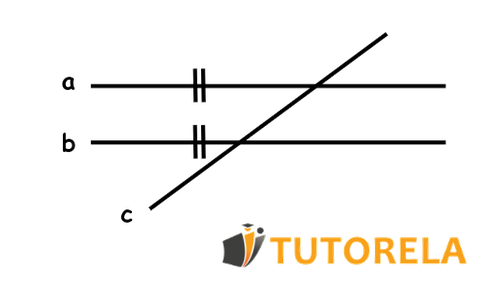Frequently Asked Questions
Everything you need to know about Parallel Lines
What are parallel lines and how do you identify them?
+ Parallel lines are coplanar lines that never intersect and maintain a constant distance between them. They are denoted with the symbol ∥, such as a ∥ b. In geometry, parallel lines appear in shapes like rectangles, squares, and parallelograms where opposite sides are parallel.
What happens when a transversal cuts two parallel lines?
+ When a transversal intersects two parallel lines, it creates eight angles - four at each intersection point. These angles form special relationships: corresponding angles are equal, alternate interior angles are equal, alternate exterior angles are equal, and conjugate angles are supplementary (add up to 180°).
How do you find corresponding angles in parallel lines?
+ Corresponding angles are located in the same relative position at each intersection where a transversal cuts parallel lines. One angle is external and one is internal, both on the same side of the transversal. When lines are parallel, corresponding angles are always equal.
What is the difference between alternate interior and alternate exterior angles?
+ Alternate interior angles are on opposite sides of the transversal and between the parallel lines, while alternate exterior angles are on opposite sides of the transversal and outside the parallel lines. Both types are equal when the lines are parallel.
Why are conjugate angles supplementary in parallel lines?
+ Conjugate angles (also called co-interior or same-side interior angles) are supplementary because they form a linear pair when combined with other angles in the system. Since parallel lines create consistent angle relationships, conjugate angles always add up to 180°.
How do you solve parallel line problems step by step?
+ Follow these steps: 1) Identify the parallel lines and transversal, 2) Label all eight angles formed, 3) Determine the angle relationship (corresponding, alternate, or conjugate), 4) Apply the appropriate theorem (equal or supplementary), 5) Set up equations and solve for unknown angles.
What are opposite angles and how do they relate to parallel lines?
+ Opposite angles (vertically opposite angles) are formed when two lines intersect and are located directly across from each other at the vertex. These angles are always equal, whether or not the lines are parallel. This property helps solve parallel line problems involving multiple intersections.
Can you have parallel lines in quadrilaterals?
+ Yes, several quadrilaterals contain parallel lines: parallelograms, rectangles, squares, and rhombuses have two pairs of parallel sides, while trapezoids have exactly one pair of parallel sides. Understanding these relationships helps identify parallel lines in geometric figures.
